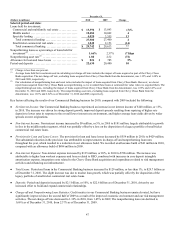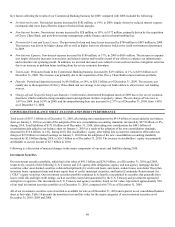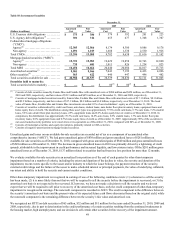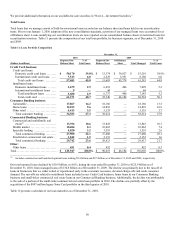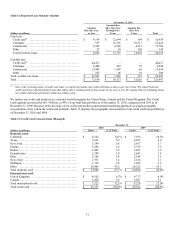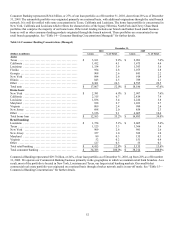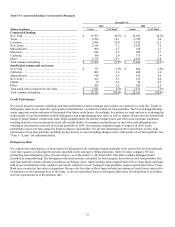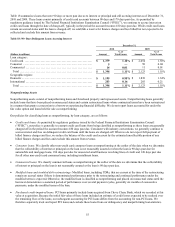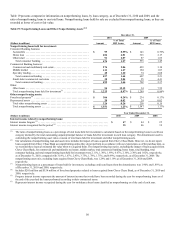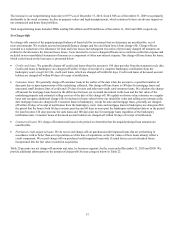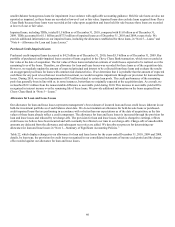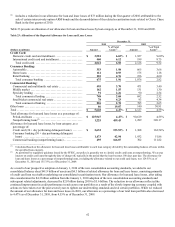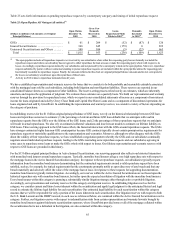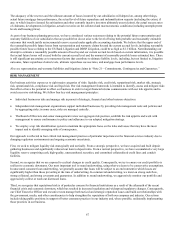Capital One 2010 Annual Report Download - page 77
Download and view the complete annual report
Please find page 77 of the 2010 Capital One annual report below. You can navigate through the pages in the report by either clicking on the pages listed below, or by using the keyword search tool below to find specific information within the annual report.57
The increase in our nonperforming loan ratio to 0.97% as of December 31, 2010, from 0.94% as of December 31, 2009 was primarily
attributable to the weak economy, decline in property values and high unemployment, which continued to have an adverse impact on
our commercial and home loan portfolios.
Total nonperforming loans included TDRs totaling $96 million and $20 million as of December 31, 2010 and 2009, respectively.
Net Charge-Offs
Net charge-offs consist of the unpaid principal balance of loans held for investment that we determine are uncollectible, net of
recovered amounts. We exclude accrued and unpaid finance charges and fees and fraud losses from charge-offs. Charge-offs are
recorded as a reduction to the allowance for loan and lease losses and subsequent recoveries of previously charged off amounts are
credited to the allowance for loan and lease losses. Costs incurred to recover charged-off loans are recorded as collection expense and
included in our consolidated statements of income as a component of other non-interest expense. Our charge-off time frame for loans,
which varies based on the loan type, is presented below.
• Credit card loans: We generally charge-off credit card loans when the account is 180 days past due from the statement cycle date.
Credit card loans in bankruptcy are charged-off within 30 days of receipt of a complete bankruptcy notification from the
bankruptcy court, except for U.K. credit card loans, which are charged-off within 60 days. Credit card loans of deceased account
holders are charged-off within 60 days of receipt of notification.
• Consumer loans: We generally charge-off consumer loans at the earlier of the date when the account is a specified number of
days past due or upon repossession of the underlying collateral. Our charge-off time frame is 180 days for mortgage loans and
unsecured small business lines of credit and 120 days for auto and other non-credit card consumer loans. We calculate the charge-
off amount for mortgage loans based on the difference between our recorded investment in the loan and the fair value of the
underlying property and estimated selling costs as of the date of the charge-off. We update our home value estimates on a regular
basis and recognize additional charge-offs for declines in home values below our initial fair value and selling cost estimate at the
date mortgage loans are charged-off. Consumer loans in bankruptcy, except for auto and mortgage loans, generally are charged-
off within 40 days of receipt of notification from the bankruptcy court. Auto and mortgage loans in bankruptcy are charged-off in
the period that the loan is both 60 days or more past due and 60 days or more past the bankruptcy notification date or in the period
the loan becomes 120 days past due for auto loans and 180 days past due for mortgage loans regardless of the bankruptcy
notification date. Consumer loans of deceased account holders are charged-off within 60 days of receipt of notification.
• Commercial loans: We charge-off commercial loans in the period we determine that the unpaid principal loan amounts are
uncollectible.
• Purchased credit-impaired loans: We do not record charge-offs on purchased-credit impaired loans that are performing in
accordance with or better than our expectations as of the date of acquisition, as the fair values of these loans already reflect a
credit component. We record charge-offs on purchased credit-impaired loans only if actual losses exceed estimated losses
incorporated into the fair value recorded at acquisition.
Table 20 presents our net charge-off amounts and rates, by business segment, for the years ended December 31, 2010 and 2009. We
provide additional information on the amount of charge-offs by loan category below in Table 22.


